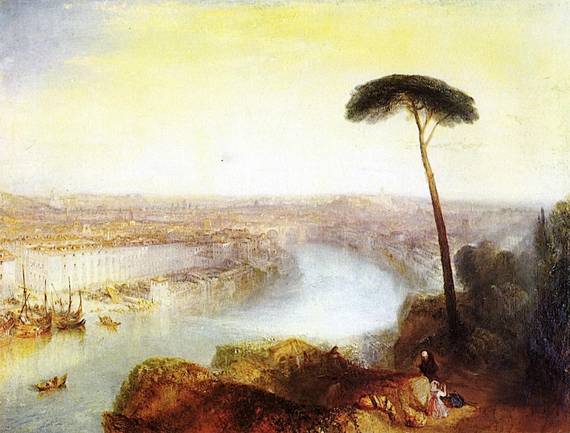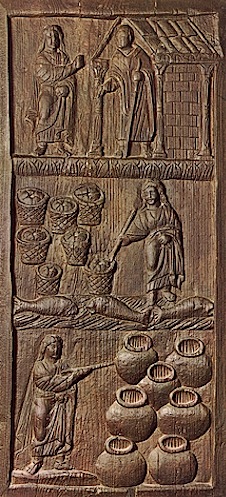News in early December of the sale through Sotheby’s of Turner’s great landscape painting “Rome, from Mount Aventine” has been given much publicity because of the record price of £30.3 million it fetched: the most ever paid for a painting by Turner.

In preparation for a new edition of Blue Guide Rome I recently revisited the park on the Aventine hill beside the church of Santa Sabina, which must have been close to the place where Turner would have made his pencil sketches, or coloured drawings, in the early morning, on his second trip to Rome in 1828. The view is still remarkably similar, looking downstream at the Tiber beyond a solitary umbrella pine, with St Peter’s on the skyline and the city of Rome spread out on either bank. When the picture was first exhibited in London in 1836 Constable commented: “Turner has outdone himself, he seems to paint with tinted steam, so evanescent and airy”.
The Aventine remains one of the most peaceful places to visit in all Rome. In the little park, aptly called the Giardino degli Aranci because it is planted with orange trees (laden with fruit in this season), apart from the magnificent view from the balustrade, there are numerous tall umbrella pines with their eccentrically shaped trunks (so beloved of Turner, who frequently included them in his landscapes). Near the entrance—and just beyond one of the city’s most delightful wall fountains—is the church of Santa Sabina, justly considered the most beautiful early-Christian basilica in all Rome. It is wonderfully illuminated by thirty-four windows in the nave and apse. It has classical fluted columns, with Corinthian capitals reused from a Roman building of the 2nd century AD, as well as ancient marble inlay in precious marbles and porphyry and a long mosaic inscription. But it also possesses one of the least appreciated works of art in the city still in situ: its original 5th-century carved wooden doors.

These doors can easily be missed since the church is entered from a side door (you have to go round to the portico on the left to find them). A coin-operated light has recently been installed which is essential to examine the panels, eighteen in all, with stories from the Old and New Testaments. Although they are high up you can make out many of the scenes, including Elijah in his chariot of fire with Elisha tugging at his mantle; Moses while still a shepherd tending his five sheep, and then talking with God on Mount Horeb; the Egyptians being drowned in the Red Sea; and three miracles of Christ, who holds a ‘magic’ wand (shown healing the blind man; next to seven wine jars at the marriage of Cana; and perfomring the miracle of the loaves and fishes). An eerie Crucifixion scene, said to be one of the earliest in existence, with the Crosses hardly visible at all, has Christ and the thieves depicted with outstretched arms. The charming Ascension of Christ shows two angels struggling to lift Him upwards as four of the Apostles watch in amazement. One only hopes Turner took some time off from his sketching to have a look at these, too.
by Alta Macadam, author of Blue Guide Rome. Santa Sabina and its doors are also covered in detail in two other Blue Guides titles: Pilgrim’s Rome and Sites of Antiquity: 50 Sites that Explain the Classical World.






